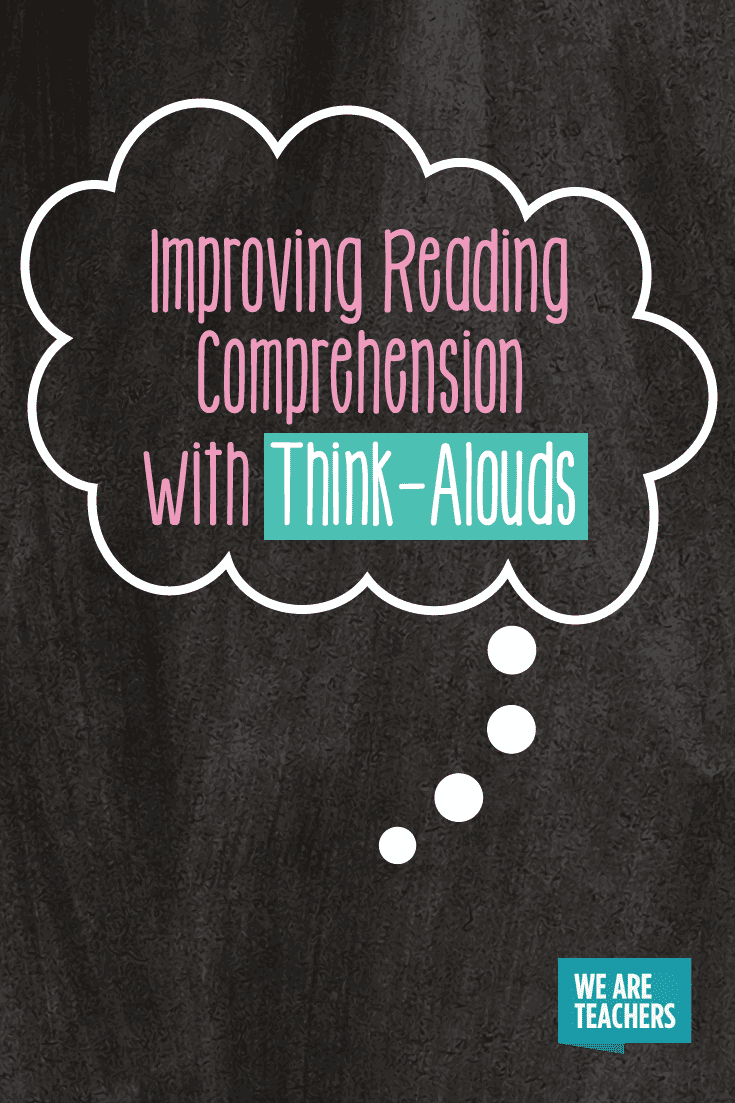“The author doesn’t come right out and say it, but I’m getting the sense that the grandparents died,” Mrs. Sweeney tells her class of second graders while reading aloud from Thank You, Mr. Falker. Throughout her read-aloud, this teacher will stop to ask questions, make observations, and think deeply about the story. By allowing her class to eavesdrop on what she, a skilled reader, is thinking while reading, she is modeling the strategies used by proficient readers. She is building her students’ reading comprehension through the tried-but-true strategy of think-alouds, a powerful way to engage readers and to impact their learning.
To update your think-alouds or to return to this often overlooked strategy, follow these tips.
Think aloud with your favorite text.
There is no “right” or “wrong” text for think-alouds. Just as reading aloud is fruitful for readers of all ages and levels, think-alouds work for any text, for students of any age, and across all content areas. We can think aloud with four-year-olds reading Knuffle Bunny just as easily as we can think aloud with eighth graders in their social studies textbooks.
Plan in advance.
Whether you are reading Dr. Seuss’ Green Eggs and Ham or Hemingway’s A Moveable Feast, every think-aloud requires that you peruse the text and use sticky notes to mark “juicy stopping points.” These are the junctures that, in one way or another, invite you to do something as a reader. Infer, ask a question, lean in and take notice of figurative language, and so on. Well-executed think-alouds do not emerge extemporaneously. They require thoughtful preparation, knowledge of the chosen text, and a meaningful connection between the text and the appropriate comprehension strategies. I like to use sticky notes to mark these points as I preview the text.
Provide a visual cue to indicate when you are thinking aloud.
As I think aloud, I provide an obvious gesture that helps students differentiate between when I am reading from the text and when I am thinking about the text. To signal when I’m thinking aloud, I use my index finger and point to my temple or tap the side of my head. With this gesture, students readily understand that the words I’m saying are not found in the book but, rather, are in my head.
Use I-statements to jump-start your think-alouds.
I-statements, as in, “I wonder if the author means …” or “I’m going to reread … ,” are the clearest ways for teachers to model the reading comprehension strategies that proficient readers use. Through “I” language, students begin to learn how to apply reading strategies to their independent reading.
The secret to success lies in planning think-alouds well. They may sound spontaneous, but they are expertly choreographed. So grab your favorite text, choose your marking spots where you will stop and think, and bring your readers of all ages one step closer to independent use of comprehension strategies.
For even more direction on how to use think-alouds, use this resource from the National Council of Teachers of English.


